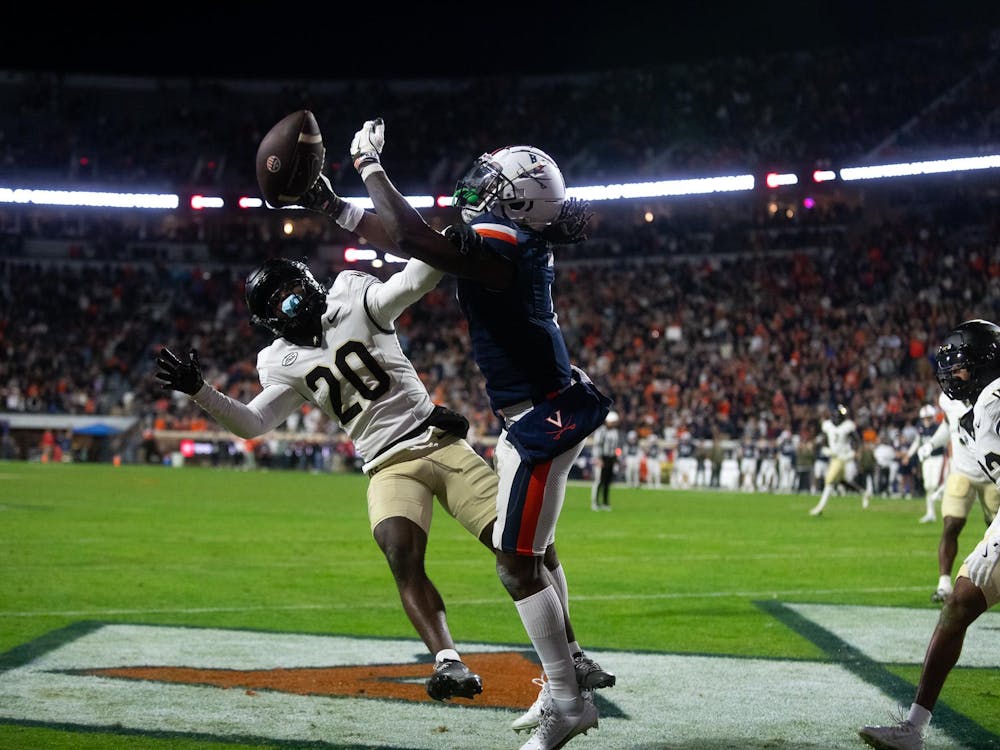In the gloom of winter nights, Virginia outdoor athletic teams can find themselves fighting not only practice squads and fatigue, but the most unpredictable of forces — Mother Nature. A recent building proposal seeks to remedy the difficulties weather poses for outdoor athletic teams.
Athletic director Craig Littlepage said the athletic department has received conceptual approval from the Board of Visitors for a new indoor facility to be used by outdoor varsity sports teams for practices in the case of inclement weather. Littlepage brought the proposal before the Board in early October.
The “indoor bubble,” Littlepage said, would include a 100-yard artificial turf field, to be used primarily during the winter months by all of Virginia’s “field teams,” which include 400 to 450 student-athletes. It would be located in the parking lot behind The Cage, he said.
“What has been missing is a facility that would allow all of the field sports — essentially the majority of our outdoor sports — to be able to have a place to go during extreme weather or inclement weather; this would be December, January and February,” Littlepage said. “The facility that we have right now — The Cage — is a facility that is below a standard that can really be used by more than several dozen students at a given point in time.”
Littlepage emphasized that the project has not been initiated, nor has any money been raised, and there is no timetable for when the facility would be constructed. He cited an editorial cartoon published in The Cavalier Daily Oct. 16, depicting a rain cloud labeled “Economic crisis” over the Rotunda and the indoor bubble, as evidence that there has been a misunderstanding as to when construction of the facility would begin.
“Apparently, there is a little bit of concern about getting a project like this started during a time of economic downturn,” Littlepage said. “Just like everybody else at the University, we are also cutting budgets and looking at cost controls, so that goes back to the point that I made about, we have not started the project. We haven’t done anything other than to get approval for the concept.”
Now that the concept has been approved, Littlepage said, the next step would be to determine if there is sufficient support for the facility to raise the money necessary for its construction. In addition to money needed for construction of the facility, he said, the athletic department would also require financial backing for the construction of a new parking area to replace the parking lost from the facility’s construction, as well as ongoing operational expenses for the facility.
“What is different about athletics compared to other areas of the University, anytime that we do a project, we raise the money to do that project — we’re private-funded,” Littlepage said. “It doesn’t have any impact at all on what money is available from the [commonwealth].”
The idea for the construction of the indoor bubble has been around for years, Littlepage said, noting that discussion of the facility has intensified in the last three or four years. He added that many other schools in this region, as well as in the Northeast and the Midwest, which also experience seasonal weather patterns, already have similar facilities.
“I think [the bubble] is a great idea,” redshirt freshman football player Jared Green said. “I know a lot of teams do have that, and I’ve been to different facilities, and I think they’re amazing.”
Though the bubble could be used year-round, the main use would be for practice during inclement weather, Littlepage said.
“Just as an example, if we get several inches of snow, we have to plow the Turf fields, remove the snow early in the morning with the hope that the sunlight will dry out the field,” Littlepage said. “Right now, without such an indoor facility, we’re having to back up practice times into the evening, some teams practicing as late as 10, 11 at night; that certainly is not an ideal thing to do.”
He noted that The Cage and University Hall may be torn down at a future point, but that these events would be independent from the construction of the bubble.
“We’re not different than other departments, other schools or units of the University in terms of having needs, facility needs, and in this particular case having the need to upgrade, or to change, or to replace a facility that’s outdated or deficient in some way,” Littlepage said.






